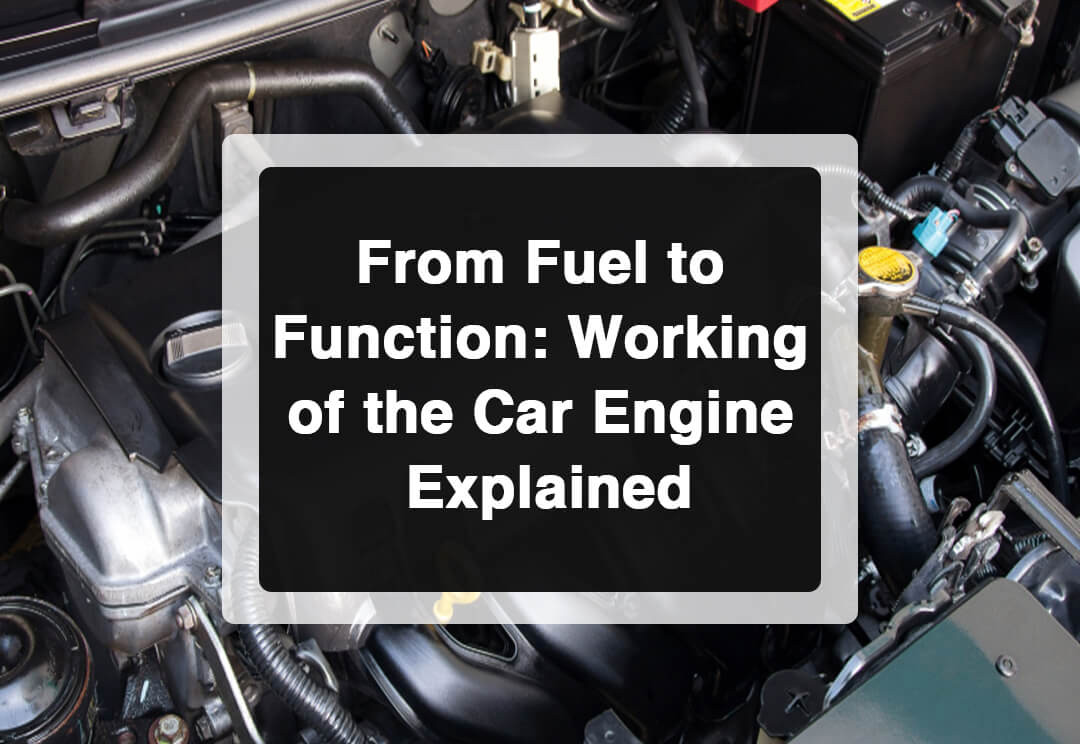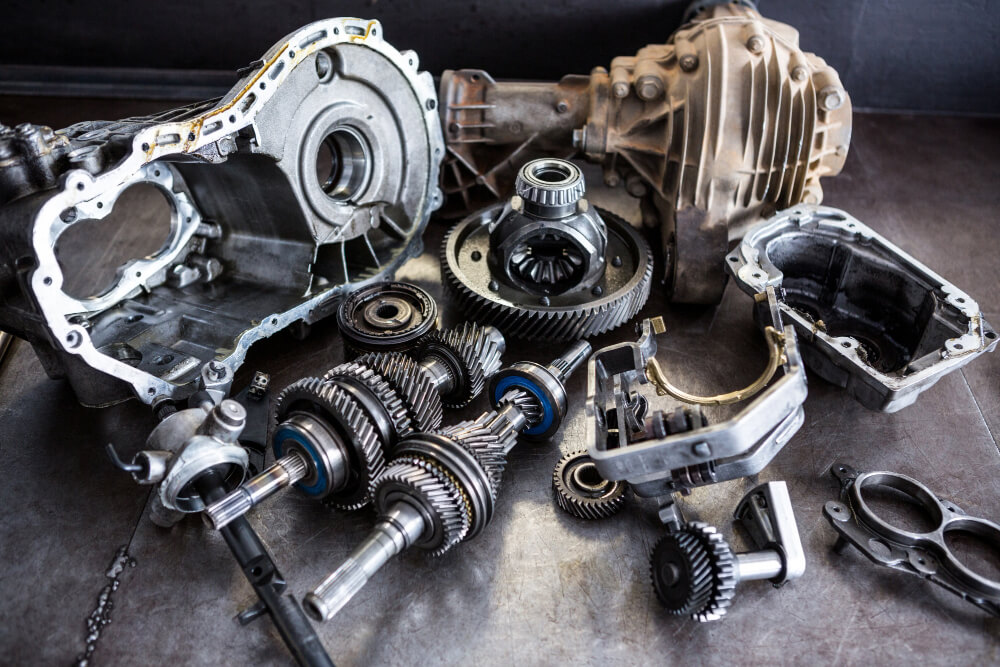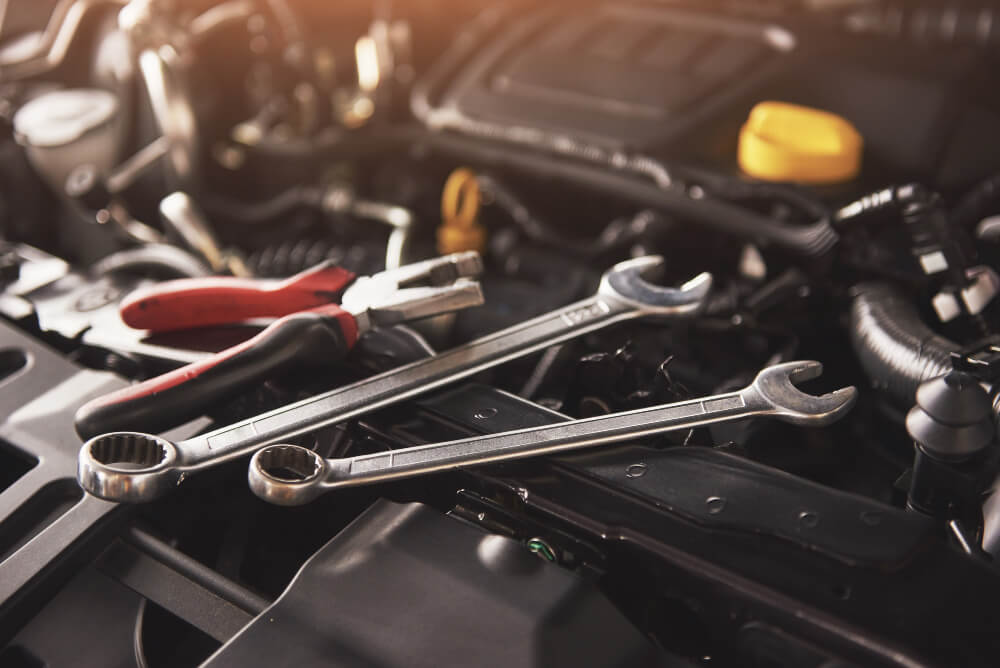From Fuel to Function: Working of the Car Engine Explained

200 years ago, there were no cars and people could not imagine travelling to places in just a short period. But, in today’s times, it has happened and things are now going at a better pace and will continue to get improved. While technology is getting advanced day by day, you must be aware of the basic functionality of the car, and the role of the car engine in keeping it running.
What happens in a car functioning is: you pour the fuel, then sit on the chair, and with movements of your hands and feet, you get to places faster. This is because of the high speeds that are attained due to the car engine, the most important component of the car. Further, you will get to know the detailed working of the car engine and its other components.
How does a car engine work and what are the parts of a Car Engine?

- Main Parts of Engines-
There are three basic engine parts, namely, the head, the block, and the oil sump. The car engine parts names and operation are as follows-
- Cylinder Head-
In the car engine, fuel needs to enter into the engine chamber and exhaust gases need to exit. This is done with the help of the cylinder head which serves as a channel for it and lies on the top of the engine. The fuel is first ignited in the combustion chamber which is located in the cylinder head. The essential components are the camshafts, valves, and combustion chamber.
- Cylinder Block- (“Short Block”)
Now, this is the section, where all the engine movement takes place , and for this part, the important components are the cylinders, piston, and crankshaft. The pistons move up and down in the cylinders as the fuel burns, expands and puts very-high pressure on the pistons which are pushed down in the cylinders. They are connected to the crankshaft which converts the piston up-and-down motion into rotary motion. The assembly of the cylinder block, pistons, connecting rods and crankshaft are known as the “Short Block”.
- Oil Sump-
This is the lowermost part of the car engine. The key components of the part are the oil pan, oil-pump and the oil filter. The engine’s oil-supply reservoir is here and the oil-pump pumps the lubricating oil from the sump to all the critical parts of the engine through internal passages.
- Workflow of the Car Engine-

In today’s times, people wonder as to how many parts are in a car and here the car engines are usually 4-stroke engines, which signifies that the engine creates usable power in 4 strokes. Now, you must be wondering as to what are “strokes”. So, the movement of the piston from the bottom-most position to the topmost position and vice versa is referred to as a stroke. The 4-strokes are as follows-
- Intake Stroke
- Compression Stroke
- Power Stroke
- Exhaust Stroke
- Processes going inside the engine head-
At the cylinder head, the process of combustion usually begins. The medium or channel through which air-fuel mixture flows into the combustion chamber located in the cylinder head is referred to as the intake manifold. The throttle body allows varying amounts of air and fuel into the intake manifold depending on the position of the gas pedal. With the help of a fuel injector nozzle, the fuel gets injected into the end of the manifold very near to the intake valve.
After the injection of the fuel, the next important thing is the intake valve, which controls the air/fuel flow into the cylinder head and then into the combustion chamber. During the intake stroke, the intake valve is opened at the beginning and closed at the end of the stroke. For this, a camshaft, which serves as an actuator rod, controls the opening and closing of the valves.
- Processes going inside the engine block-
Inside the engine block, takes place an important process, the combustion process. In the combustion chamber that is present in the cylinder head, the combustion process takes place. The most crucial part here is the piston. When there is the movement of the piston, the rotational force on the wheels gets started. Four strokes are generated with the help of a piston.
Also Read: Rough Idling Of Car Engine & Militating The Conditions
- Four Strokes of the Engine-
- Intake Stroke-
At the top dead centre of the piston which is the highest point it reaches in the cylinder, the process of combustion starts. During the process, the piston moves down. As the piston moves down in the cylinder, the intake valve starts to open, which lets the air-fuel mixture to be sucked in from the manifold. The combustion chamber gets filled up with air-fuel mixture by the time piston reaches the bottom dead centre (lowest point in the cylinder).
- Compression Stroke-
The stroke of compression starts usually when the piston reaches the bottom dead centre. The intake valve closes down when the piston is about to reach the lowermost position. With this step, the piston starts moving upwards. This leads to compression of air-fuel mixture as both the intake and exhaust valves are now closed. As the fuel mixture is compressed, it gets hotter and more compact so it will generate maximum combustion when ignited.
- Power Stroke-
During this stroke, the spark-plug in the cylinder head produces a tiny spark, when the piston reaches the topmost position in the compression stroke. The mixture gets ignited when the spark gets in contact with the air-fuel mixture. After ignition, the burning air/fuel causes tremendous pressure to force the piston downwards.
- Exhaust Stroke-
The last stroke is the exhaust stroke. When the piston moves back up towards TDC (top-dead center), the exhausting car engine valve opens up. The leftover gases are pushed out into the exhaust system. With this stroke, the cycle gets completed. With this, the piston moves from top centre to bottom centre and the cycle gets restarted.
- The Oil Sump-
The lowermost part of the engine is the oil sump. It helps to store and circulate the lubricant oil to other different parts of the engine. The essential components of the oil sump are the oil pan and the oil pump.
There is a small strainer at the opening of the oil pump, which filters out large debris. After the oil gets sucked, the pump helps in passing the oil to a primary filter, which removes all smaller debris as well as metal bits.
With this, now you know the working of the car engine. For more information on the car engine, their components, and their working, get in touch with experts at Car Inspectors.
Also Read: How To Identify Car Exhaust Problems?
